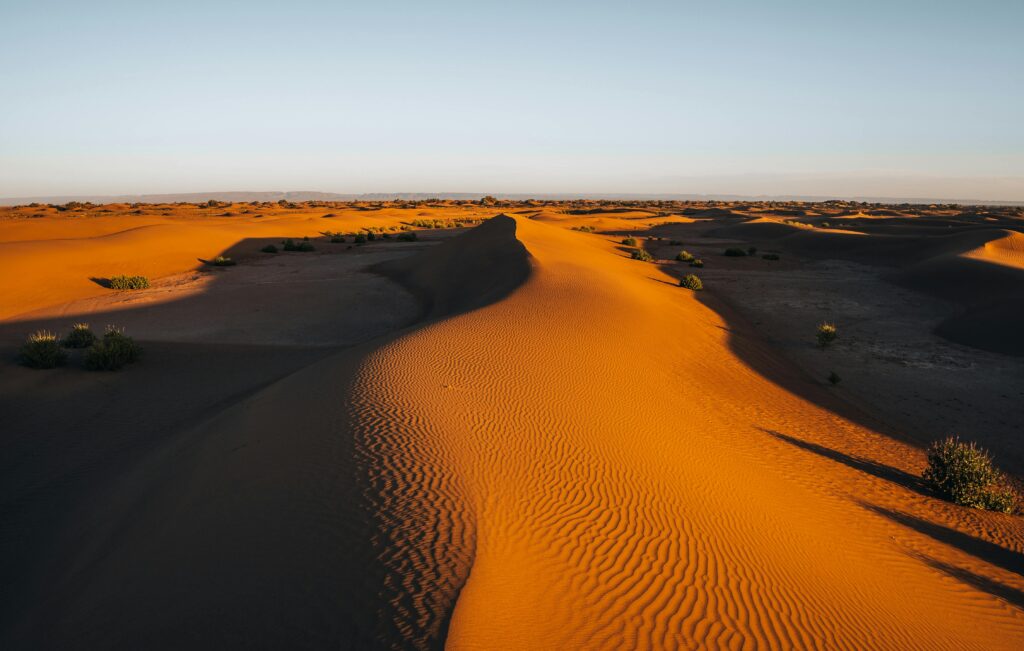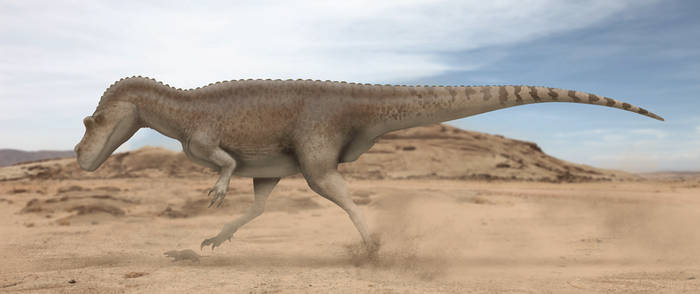The Sahara Desert, often perceived as a desolate expanse of sand, is in reality a vast historical archive, holding countless “Secrets Hidden Beneath the Sahara Desert.” This immense arid region has, over
millennia, swallowed evidence of ancient life, geological shifts, and human endeavors, preserving them within its sandy embrace. Modern technology is only now beginning to peel back these layers,
revealing a past far richer and wetter than its current appearance suggests.

One of the most profound “Secrets Hidden Beneath the Sahara Desert” pertains to its watery past. Evidence overwhelmingly indicates that the Sahara was once home to immense freshwater
bodies, vastly exceeding the size of present-day lakes. Paleo-lakes such as Lake Mega Chad, which dwarfed its modern counter part ,and the Wadi Tuka lake, are testament to a significantly different
hydrological regime. Discoveries of fish fossils, ancient human settlements near these former shorelines, and even the remnants of vast river systems, confirm a verdant Sahara. The Tamanrasett River,
for instance, once flowed through what is now Mauritania, forming what would have been the world’s twelfth-largest drainage basin. This ancient river, whose course was initially identified by an
undersea canyon off the coast and later confirmed by satellite imagery, may have only dried up a mere 5,000 years ago, highlighting the relatively recent transformation of the region. This dramatic
climatic shift, from a lush, water-rich environment to the arid desert we know today, is a crucial “Secret Hidden Beneath the Sahara Desert,” explaining the surprising array of marine and aquatic life
fossils found far from any current water body.
Indeed, the Sahara’s deep geological past reveals an even more astonishing “Secret Hidden Beneath the Sahara Desert”: its former identity as an ocean. The Wadi Al-Hitan in Egypt, famously known as
Whale Valley, is a prime example of this. Here, exceptionally preserved fossils of ancient whales, dating back 37 million years, offer a compelling narrative of their evolutionary journey from land-dwelling creatures to fully marine mammals. These colossal skeletons, some reaching 15 meters in length, lie alongside the teeth of formidable sharks, painting a vivid picture of a bustling ancient
sea. Similarly, the discovery of Machimosaurus rex, a 9-meter-long crocodile, in the Sahara points to a vast lagoon environment that once stretched to the Tethys Ocean some 120 million years ago. This
powerful predator, with its massive head and crushing bite, preyed on marine turtles and fish, further underscoring the “Secrets Hidden Beneath the Sahara Desert” that challenge our conventional
understanding of the region.
Beyond ancient aquatic life, the Sahara is also a treasure trove of terrestrial prehistoric marvels, another set of “Secrets Hidden Beneath the Sahara Desert.” Among the most significant is the Spinosaurus aegyptiacus, the largest carnivorous dinosaur ever discovered, surpassing even the formidable Tyrannosaurus rex in size. Measuring 16 meters long and standing 7 meters tall, Spinosaurus, unlike other large theropods, exhibited remarkable adaptations for a semi-aquatic lifestyle, including long, flat feet for
paddling and high-set nostrils for breathing while submerged. Its characteristic dorsal sail, a striking feature, further adds to its mystique. The initial Spinosaurus fossils were tragically lost during World War II, but new discoveries in Morocco have allowed paleontologists to further unravel the “Secrets Hidden Beneath the Sahara Desert” concerning this unique dinosaur, solidifying its place as the only known truly semi-aquatic dinosaur. The sheer abundance of dinosaur fossils in the Sahara, unearthed due to the lack of dense vegetation and soil cover, provides an unparalleled window into itsprehistoric ecosystems.

The human element also forms a crucial part of the “Secrets Hidden Beneath the Sahara Desert.” Ancient civilizations, long lost to the shifting sands, are gradually resurfacing. In 2010, satellite imagery revealed the remnants of over 100 fortresses belonging to the Garamantes people in Libya. Flourishing between the second century BC and the seventh century AD, the Garamantes ingeniously engineered underground channels to draw water from ancient reservoirs, enabling agriculture in an already arid region.
water sources eventually failed, their settlements and fortresses were reclaimed by the desert, becoming “Secrets Hidden Beneath the Sahara Desert” for centuries. This discovery not only highlights advanced ancient engineering but also provides a stark reminder of the desert’s capacity to engulf entire cultures.
Furthermore, the Sahara holds profound archaeological sites that predate known civilizations, offering tantalizing glimpses into the earliest human inhabitants of the region. The Nabta Playa site in Southern Egypt, dating back 9,000 to 6,000 years ago, reveals a Neolithic culture that thrived around a seasonal lake. Here, remarkably, ancient stone circles have been discovered, predating Stonehenge by a millennium. These megalithic structures are believed by some researchers to be astronomically aligned, possibly with Orion’s Belt, making them potentially the earliest known astronomically aligned structures and significant “Secrets Hidden Beneath the Sahara Desert” regarding early human understanding of
the cosmos. The ritualistic burials of cattle, sheep, and goats at Nabta Playa also shed light on the spiritual practices of these ancient communities.
Perhaps one of the most poignant “Secrets Hidden Beneath the Sahara Desert” is the Gobero site in Niger. Discovered accidentally by paleontologist Paul Sereno during a dinosaur expedition, it represents
the largest ancient human graveyard in the Sahara, holding the remains of approximately 200 individuals. This site, inhabited as early as 10,000 years ago, was once a lush environment, as evidenced by the intermingled remains of fish, crocodiles, and other animals with human burials. The Gobero site reveals two distinct periods of human occupation, separated by over a millennium: the Kiffians and the Tenerians. The Kiffians, who lived around 10,000 years ago, were tall, robust people who hunted large game and fished using harpoons. The Tenerians, who followed after a period of extreme aridity, were smaller in stature and pastoralists. The burials at Gobero are strikingly unusual, with one individual buried with their head in a pot and another resting on a turtle shell. These discoveries provide invaluable “Secrets Hidden Beneath the Sahara Desert” about the adaptive strategies and cultural practices of early Saharan populations. The narratives of these people, how they lived, and why they ultimately vanished, remain among the most intriguing and elusive mysteries.
Beyond the biological and anthropological, the Sahara also bears the scars and treasures of cosmic events, adding another dimension to the “Secrets Hidden Beneath the Sahara Desert.” The desert is a prime location for meteorite discoveries, accounting for almost a fifth of all meteorites recovered globally. Their dark forms stand out starkly against the light-colored sand, making them relatively easy to
spot. The Kamil Crater in Southwestern Egypt, a 45-meter-wide impact site from an iron meteorite strike around 5,000 years ago, is a powerful visual reminder of these celestial bombardments. Furthermore, the mysterious Libyan Desert Glass, a delicate green glass scattered across a vast region, is believed to have formed approximately 29 million years ago from a meteorite impact so powerful it melted the desert sands. While the exact crater remains undiscovered, fragments of this otherworldly glass, including a
scarab beetle carved from it found in Tutankhamun’s tomb, highlight the “Secrets Hidden Beneath the Sahara Desert” that transcend earthly origins.
Finally, the Sahara also conceals more recent historical “Secrets Hidden Beneath the Sahara Desert,” particularly from the twentieth century. The discovery in 2012 of a remarkably intact World War II
P-40 Kittyhawk fighter plane, lost in 1942, serves as a poignant example. Flight Sergeant Dennis Copping and his aircraft vanished during a ferrying mission for repairs, their fate a mystery for seventy years. The remarkably preserved plane, with evidence of a makeshift shelter created from a parachute, offers a chilling glimpse into the final moments of the pilot, whose remains, however, have never been
found. This singular discovery not only represents a fascinating historical artifact but also underscores the desert’s immense power to preserve, and sometimes conceal, even relatively modern events.

In conclusion, the Sahara Desert is far from a barren wasteland. It is a dynamic landscape that has served as a colossal time capsule, meticulously preserving a multitude of “Secrets Hidden Beneath the Sahara Desert.” From ancient mega-lakes and lost river systems to the fossilized remains of marine creatures and giant dinosaurs, from the remnants of sophisticated ancient civilizations to the enigmatic burials of early humans, and even the impact sites of meteorites and lost wartime aircraft, the Sahara continues to yield extraordinary discoveries. These ongoing revelations are not only reshaping ourm understanding of this iconic desert but also providing invaluable insights into Earth’s climatic history, evolutionary processes, and the enduring resilience and ingenuity of human civilization. The full extent of the “Secrets Hidden Beneath the Sahara Desert” remains to be uncovered, promising even more astonishing revelations in the years to come as technology advances and exploration continues.
